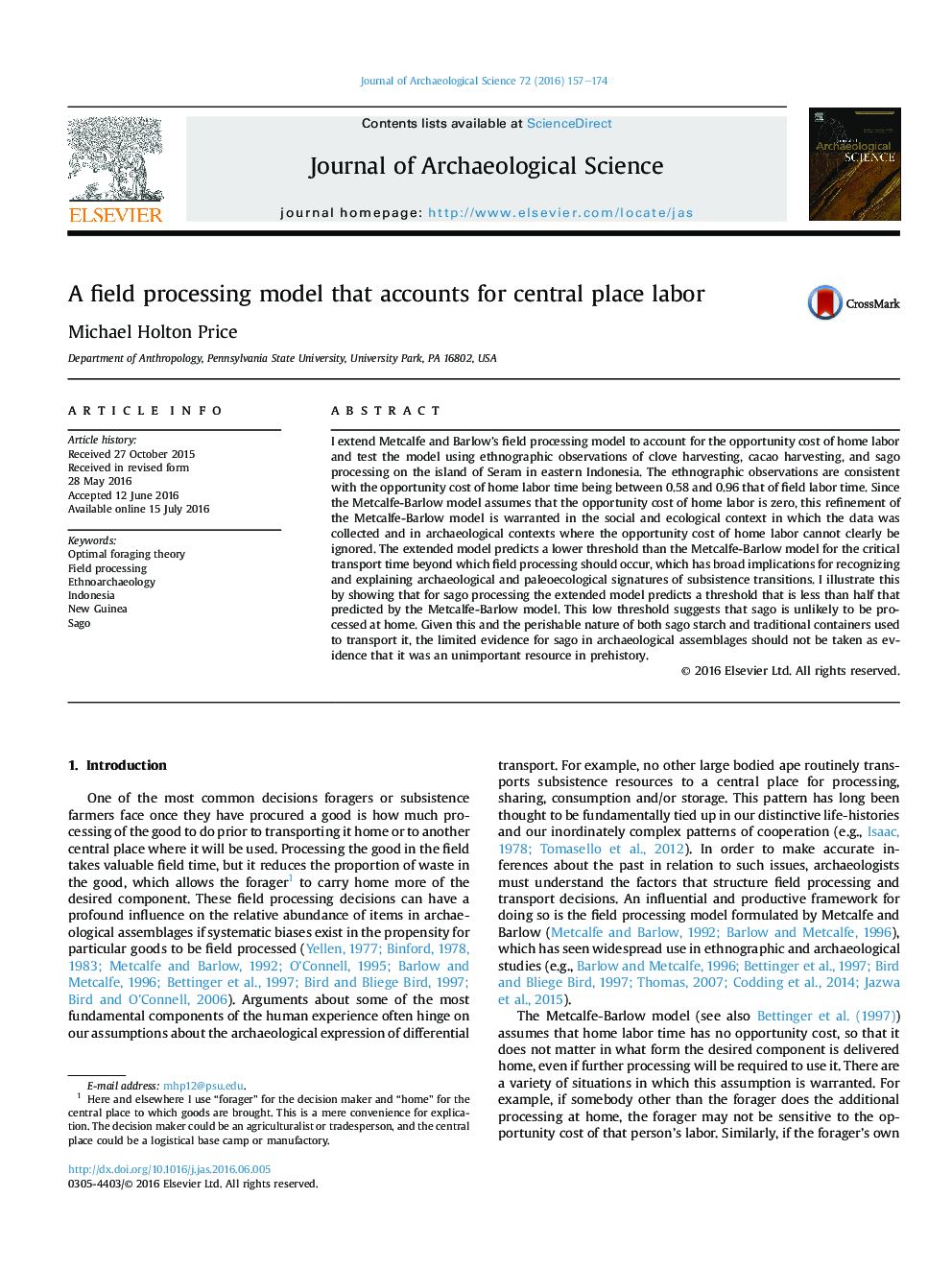| Article ID | Journal | Published Year | Pages | File Type |
|---|---|---|---|---|
| 7441299 | Journal of Archaeological Science | 2016 | 18 Pages |
Abstract
I extend Metcalfe and Barlow's field processing model to account for the opportunity cost of home labor and test the model using ethnographic observations of clove harvesting, cacao harvesting, and sago processing on the island of Seram in eastern Indonesia. The ethnographic observations are consistent with the opportunity cost of home labor time being between 0.58 and 0.96 that of field labor time. Since the Metcalfe-Barlow model assumes that the opportunity cost of home labor is zero, this refinement of the Metcalfe-Barlow model is warranted in the social and ecological context in which the data was collected and in archaeological contexts where the opportunity cost of home labor cannot clearly be ignored. The extended model predicts a lower threshold than the Metcalfe-Barlow model for the critical transport time beyond which field processing should occur, which has broad implications for recognizing and explaining archaeological and paleoecological signatures of subsistence transitions. I illustrate this by showing that for sago processing the extended model predicts a threshold that is less than half that predicted by the Metcalfe-Barlow model. This low threshold suggests that sago is unlikely to be processed at home. Given this and the perishable nature of both sago starch and traditional containers used to transport it, the limited evidence for sago in archaeological assemblages should not be taken as evidence that it was an unimportant resource in prehistory.
Related Topics
Physical Sciences and Engineering
Materials Science
Materials Science (General)
Authors
Michael Holton Price,
